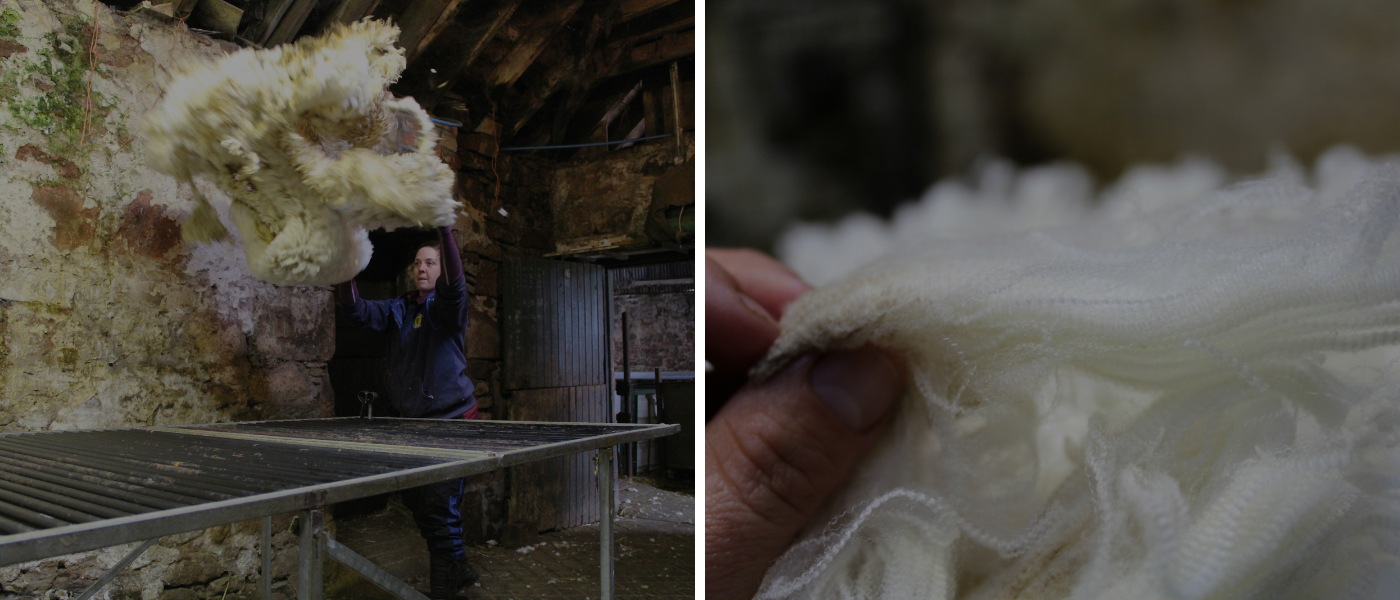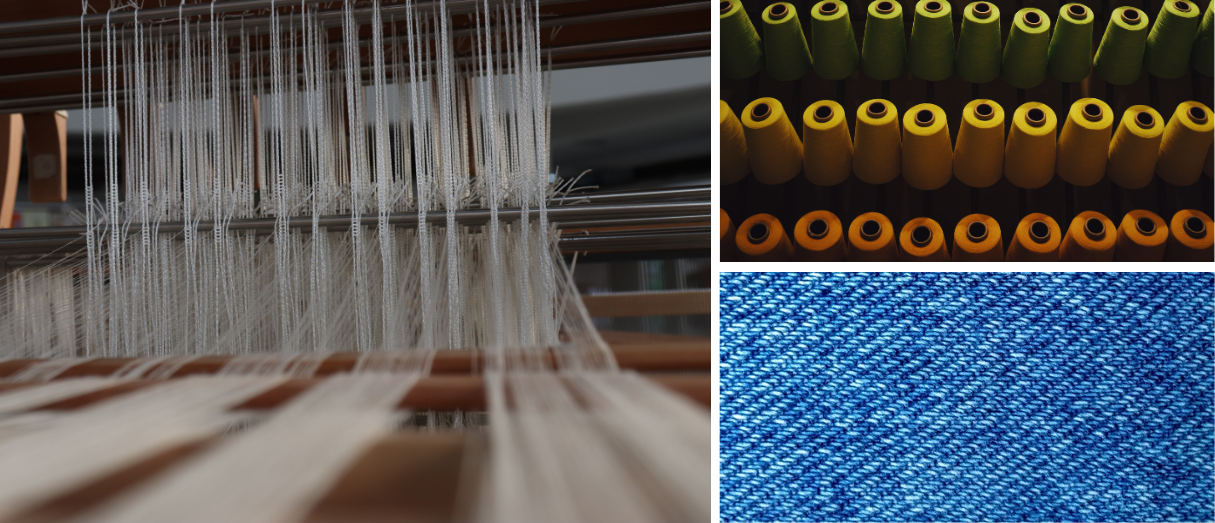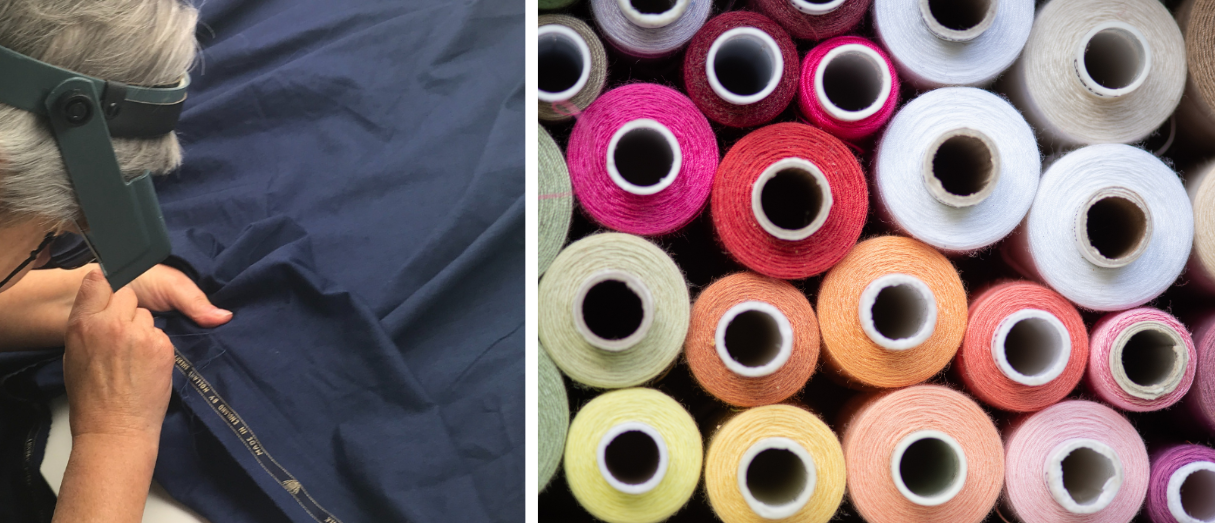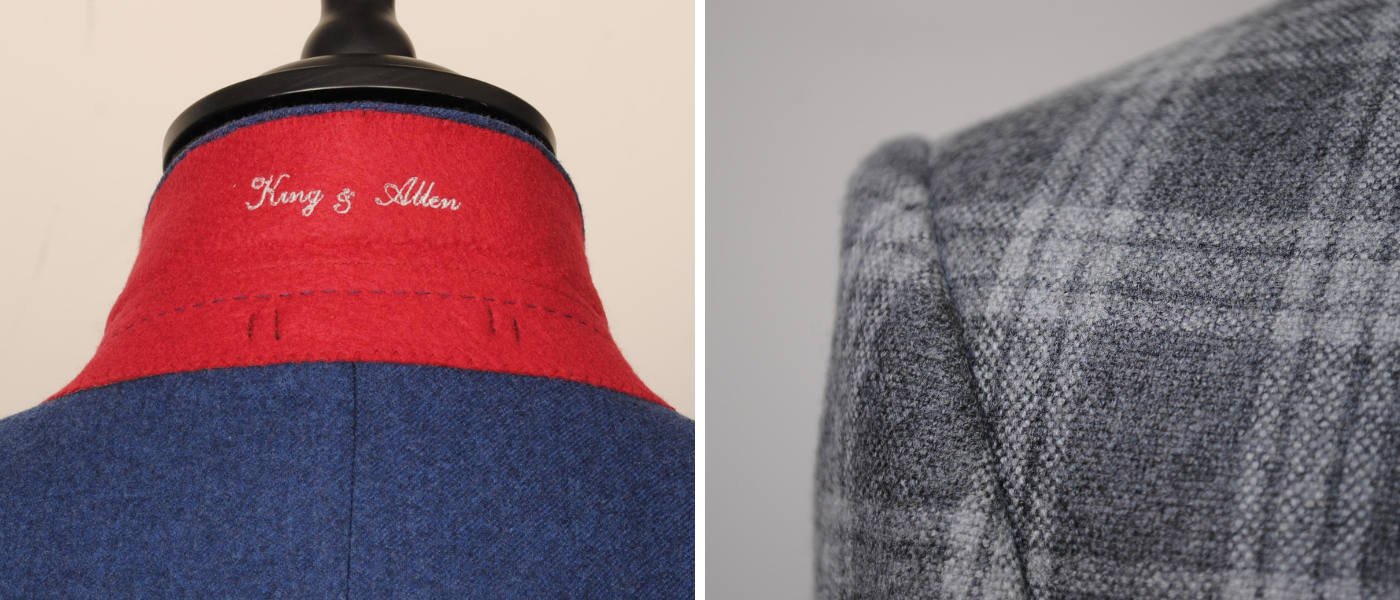Article
Wool... from Field to Finished Garment
Wool is a natural, sustainable fibre that has been used for centuries to make clothing, blankets and other textiles. In the UK, wool is particularly well-known for its use in suiting fabrics, and in this article we delve into the process of taking wool from farmer's field to finished product.
SHEARING THE FLUFFY STUFF

Think of wool and you generally think of sheep, but there are lots of other animals that grow this fluffy layer - e.g. goats, llamas and alpacas - each providing different benefits for the end use.
Shearing is the process of removing the wool from the animal's fleece and is typically done once a year in the spring, when the animal's fleece is at its thickest. The sheared wool is then sorted into different grades based on its quality and fineness.
CLEANING THE WOOL

The wool is then sent to the mill, where it starts the next phase of its journey. This begins with a thorough clean, which is done by soaking the wool in water to remove any dirt, grease and other impurities.
The wool is then put through a series of machines that help to remove any remaining debris and fibres.
Wool mills are typically located near natural water sources in order to minimise energy consumption and remain as true to the traditional craft as possible.
CARDING THE FIBRES

Now that the wool is clean, 'carding' is then used to separate, straighten and align the fibres through the use of a series of rollers.
The carded wool is then formed into thin sheets, known as batts, which are layered together to create a thick mat of wool fibres.
SPINNING A YARN

Spinning yarn often brings to mind Rumpelstiltskin sitting in a dungeon on his spinning wheel. Whilst dungeons aren't so common in yarn production, the basic principle of spinning the fibres to create a thread remains unchanged.
The fibres can be twisted in several different ways depending on the desired yarn structure. In the case of suiting fabrics, the yarn is typically spun using a 'worsted spinning' process, which involves twisting the wool fibres together tightly to create a smooth, strong yarn ideal for weaving.
You'll notice from the pictures above that the spinning phase is commonly when the wool is dyed into the spectrum of colours desired in the end fabric.
WEAVING THE CLOTH

Weaving is the process of interlacing the yarns together to create a fabric. In the case of suiting fabrics, the material is typically woven using a twill weave.
Twill weave creates a distinctive diagonal pattern on the fabric, which is a hallmark of many high-end suiting fabrics. The weaving process can be done by hand, but many mills now use automated looms to increase efficiency and consistency.
FINISHING TOUCHES

Once the fabric has been woven, it undergoes a series of finishing processes to improve its texture, appearance, and durability. The finishing process can include:
Scouring: The fabric is washed to remove any impurities and excess oils.
Fulling: The fabric is soaked in water and then beaten to improve its texture and durability.
Shearing: The fabric is trimmed to remove any excess fibres and create a smooth surface.
Pressing: The fabric is ironed to give it a crisp, polished finish.
The finished fabric then undergoes quality control where every meter of cloth is inspected for flaws. These flaws are then either repaired by hand or clearly marked so that we can cut around the flaw when tailoring.
FITTING IT TO YOU!

Now that we have the fabric, we can start building the garments. This involves choosing, cutting and contorting the fabric to fit the shape and desired aesthetic of each client. At King & Allen, we work with a number of different cloth merchants and always ensure that our suits are made from the best-quality fabrics. The fabrics we choose and how we create your garment is a truly collaborative process between our clients and the King & Allen consultants. Every detail matters, and we won't be happy until you are!
Keen to find out more? Every initial consultation is free, so why not arrange a consultation today.

